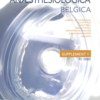The effect on hemodynamic parameters and incidence of systemic side-effects following intracameral injection of a mixture of tropicamide 0,02%, phenylephrine 0,31% and lidocaine 1% in children: a pilot study
Phenylephrine, tropicamide, mydriasis, pediatrics, cataract extraction
Published online: Mar 20 2023
Abstract
Background: intracameral injection with a mixture of tropicamide 0,02%, phenylephrine 0,31% and lidocaine 1% (ICM), has been proven a safe and efficacious alternative to eye drops in adult patients undergoing cataract surgery. It provides a reliable and long-lasting mydriasis and could therefore be used as an alternative in pediatric patients undergoing cataract surgery. A safety profile has been established in adult, but not yet in pediatric populations.
Objective: to evaluate whether ICM is a safe alternative to preoperative eye drops in pediatric populations, with minimal effects on hemodynamic parameters and a low incidence of adverse events.
Materials & Methods: patients aged 8 weeks to 17 years scheduled for cataract surgery under general anesthesia, either unilaterally or bilaterally, were included from November 2020 until October 2021. All subjects received ICM. Perioperative blood pressure, heart rate and any adverse events (e.g. bradycardia, hypertension, etc.) were recorded.
Results: 40 patients were included in this study. A mixed effects model analysis showed that, after a first dose of ICM, the Z-score for systolic blood pressure (zSBP) would increase by a 0,036 (sig=0,617), the Z-score for diastolic blood pressure (zDBP) would decrease by 0,042 (sig=0,151) and the Z-score for heart rate (zHR) would increase by 0,034 (sig=0,250). A second dose of ICM would increase zSBP by 0,021 (sig=0,694), decrease zDBP by 0,006 (sig=0,907 and would decrease HR by 0,038 (sig=0,273). No event of hemodynamic instability requiring stabilization was reported. Five events of inadequate depth of anesthesia were reported.
Conclusion: based on these preliminary findings, ICM has a negligible effect on hemodynamic parameters and can be safely used in a pediatric population. Further research is warranted to confirm the efficacy and safety profile of ICM.
